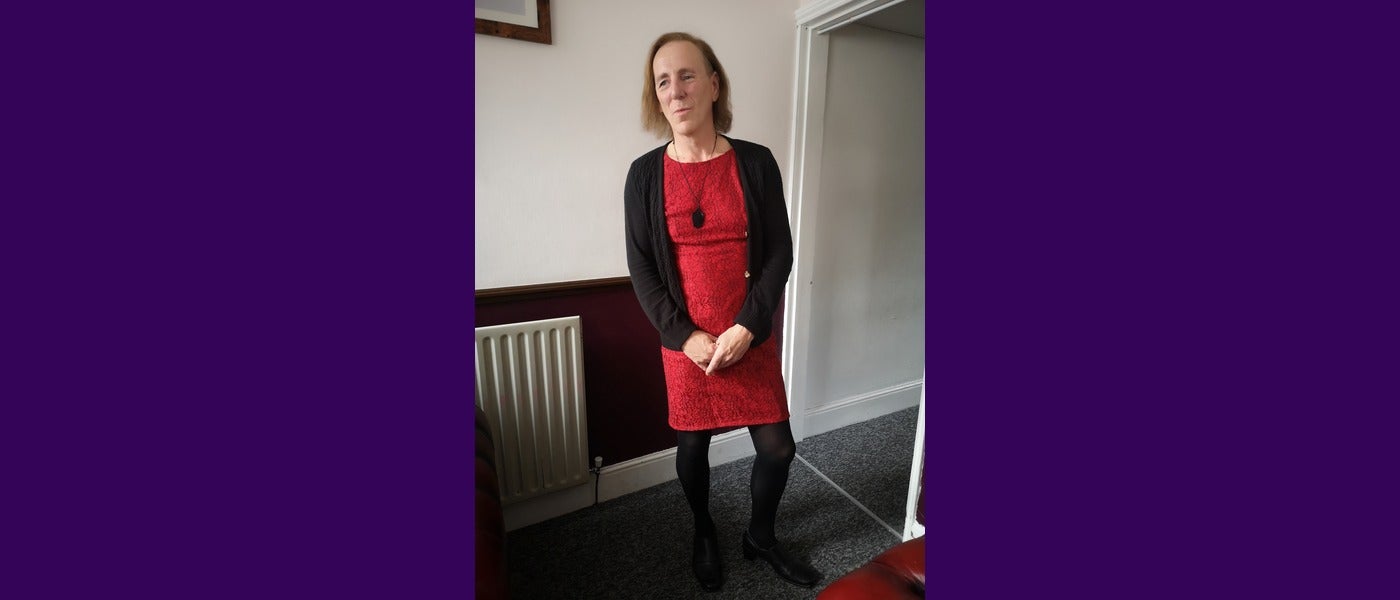- Home
- News and stories
- “It has opened up a whole new world of self-discovery.”
“It has opened up a whole new world of self-discovery.”
 24 June 2024
24 June 2024
Mandie (she/her or they/them) is a neurodivergent trans woman. In this story, they share their journey towards fully understanding and accepting themself.
In some ways, disabled people and LGBTQ+ people share common experiences. And in other aspects, both identities are completely unique. In a series of real-life stories, Mandie, Sophie, and Damian share what it’s like to be a part of both communities.
What community means to LGBTQ+ disabled people
I am known as ‘double rainbowed’ because I am an autistic, non-binary trans woman. In this way, I find myself in a strange position. It can be the most beautiful and wonderful expression of self-identity. But it can also be the most confusing, scary, and bewildering experience.
There seems to be a good deal of cohesion between being queer and being neurodivergent. Both groups are discriminated against, joked about, and misunderstood by society at large.
After initially feeling isolated at LGBTQ+ and autism groups, I found overlapping themes and issues in both settings. For me, being embraced by both groups for who I am was extremely important and comforting.
I think more needs to be done to create awareness and understanding of the interlink between autism or other conditions, and being LGBTQ+.
Finding my sense of identity as a neurodiverse trans person
The journey and the struggles of realising I am trans and autistic have been long. However, the learning I have gained is nothing short of an amazing gift. I had to go through it all to get to this point of wonder and contentment. It has opened up a whole new world of self-discovery.
Accepting and coming to terms with my autism enabled me to also come to terms with being trans. I connect the sensory side of my autism to my emotional mindset as a transwoman. The merging of both has shaped who I am now.
My neurodiverse and LGBTQ+ identities are connected
I came to understand my neurodiversity in my mid 40’s, I realised how I had been masking it from early childhood.
It also took many years for me to understand and accept myself as being LGBTQ+. It all seemed so very confusing, but became a reality for me when I accepted it within my own heart and head. The more I came to understand and discover about being trans, the more I realised I was actually trans myself.
As an adult I have acquired a huge understanding of self. In fact, ‘coming out’ has been a spiritual awakening. I am proud to accept myself and be the autistic me. This is my identity, and I would not change it.
In transitioning, you have a dual identity. That can be extremely confusing at times. I have had to learn to simply accept myself as I am for who I am.
Looking back at before I knew, I can relate to being trans and autistic. I have spent years pondering upon both, attempting to figure out my emotions and sensitivities.
Members of our online community are sharing their stories to celebrate LGBTQ+ Pride Month. Visit the thread to share your Pride.
 24 June 2024
24 June 2024





